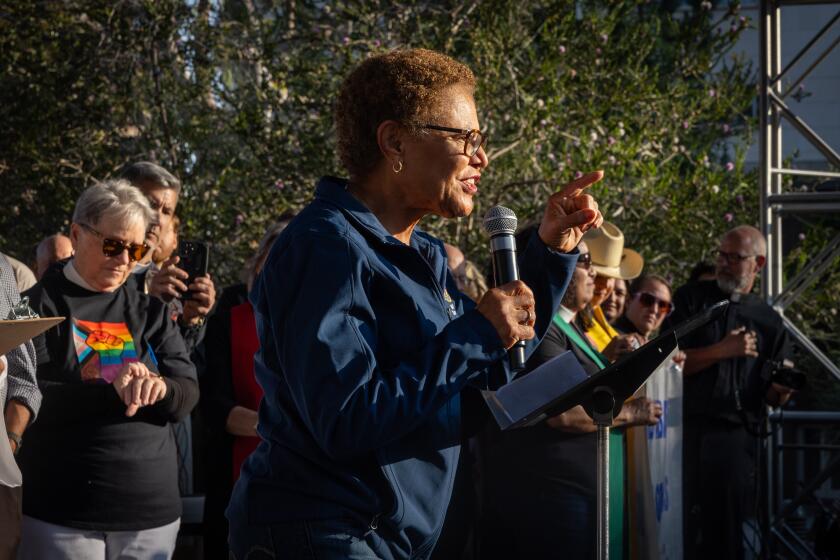Hillcrest Hospice Set for Summer Opening : Health care: Completion of the $11-million complex for the terminally ill marks the end of a five-year struggle. It is the first inpatient hospice in the state.
- Share via
San Diego Hospice staff workers moved into their $11-million, bluff-top complex overlooking Mission Valley on Friday, marking the beginning of the end of a five-year battle against local residents and the state Legislature to build the facility for the terminally ill.
The three-building complex includes a 24-bed hospital and a research center dedicated to the study of palliative care, an undeveloped branch of medicine dealing with patients suffering from incurable diseases.
The acute-care hospital is scheduled to open in June, 1991, and will provide a home-like atmosphere for patients, complete with beds for visiting family members, said Hospice Executive Director Holly Lorenston. The hospital will be the first inpatient hospice center in the state, she said.
“It’s amazing to have us actually here after all the hurdles,” Lorenston said, adding that the search for a site for the 171,000-square-foot complex began seven years ago.
A group of Hillcrest residents lobbied the San Diego City Council to have the 10-acre tract turned into a park, but the City Council upheld the hospice project in a unanimous vote, citing the existing parks in the area, Lorenston said.
Mercy Hospital, two blocks away, also fought for the land, proposing a senior housing project, she said.
After the groundbreaking ceremony in October, 1988, the project came to a halt when the state refused to grant a license for the hospital, saying it didn’t meet standards set for acute-care hospitals.
But the hospice was able to get emergency legislation passed that redefines standards for hospice hospitals, exempting them from having surgery and anesthesia services, which will be contracted out to other acute-care hospitals, Lorenston said.
The new complex was funded by an $18-million grant from the Joan B. Kroc Foundation, which Lorenston said would be exhausted by the time the complex is completed. About $7 million of the grant paid for services connected with the project, such as developing building plans, hiring a project management company, acquiring city building permits and lobbying the state Senate. Lorenston said the San Diego Hospice Foundation needs to raise additional money to cover approximately $2 million in operating costs for the next two years.
The hospice provided outpatient care to more than 1,000 patients last year, and has a staff of 140 health-care professionals, from nurses to counselors for bereaved families, Lorenston said. More than 500 volunteers help care for the terminally ill patients, most of whom suffer from cancer.
“We’ve always been crammed into too small a space,” Lorenston said, describing the former offices in the 9700 block of Aero Drive in Kearny Mesa, which were filled with furniture donated by staff workers and the Salvation Army. “It’s like a dream come true to realize we actually have our own home.”
More to Read
Sign up for Essential California
The most important California stories and recommendations in your inbox every morning.
You may occasionally receive promotional content from the Los Angeles Times.













